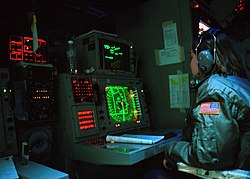
| Part of a series on |
| War (outline) |
|---|
 |
Command and control (abbr. C2) is a "set of organizational and technical attributes and processes ... [that] employs human, physical, and information resources to solve problems and accomplish missions" to achieve the goals of an organization or enterprise, according to a 2015 definition by military scientists Marius Vassiliou, David S. Alberts, and Jonathan R. Agre. [1] [2] The term often refers to a military system.
Contents
- Overview
- US perspective
- Computer security industry
- Derivative terms
- Command and control centers
- Command and control warfare
- See also
- References
- Citations
- Sources
- External links
Versions of the United States Army Field Manual 3-0 circulated circa 1999 define C2 in a military organization as the exercise of authority and direction by a properly designated commanding officer over assigned and attached forces in the accomplishment of a mission. [3] [4]
A 1988 NATO definition is that command and control is the exercise of authority and direction by a properly designated individual over assigned resources in the accomplishment of a common goal. [5] An Australian Defence Force definition, similar to that of NATO, emphasises that C2 is the system empowering designated personnel to exercise lawful authority and direction over assigned forces for the accomplishment of missions and tasks. [6] The Australian doctrine goes on to state: "The use of agreed terminology and definitions is fundamental to any C2 system and the development of joint doctrine and procedures. The definitions in the following paragraphs have some agreement internationally, although not every potential ally will use the terms with exactly the same meaning." [6]


